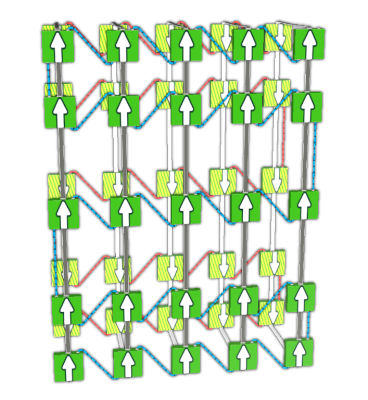
UFO Instruction Graphs are Machine Knittable

Abstract
Programming low-level controls for knitting machines is a meticulous, time-consuming task that demands specialized expertise. Recently, there has been a shift towards automatically generating low-level knitting machine programs from high-level knit representations that describe knit objects in a more intuitive, user-friendly way. Current high-level systems trade off expressivity for ease-of-use, requiring ad-hoc trapdoors to access the full space of machine capabilities, or eschewing completeness in the name of utility. Thus, advanced techniques either require ad-hoc extensions from domain experts, or are entirely unsupported. Furthermore, errors may emerge during the compilation from knit object representations to machine instructions. While the generated program may describe a valid machine control sequence, the fabricated object is topologically different from the specified input, with little recourse for understanding and fixing the issue.
To address these limitations, we introduce instruction graphs, an intermediate representation capable of capturing the full range of machine knitting programs. We define a semantic mapping from instruction graphs to fenced tangles, which make them compatible with the established formal semantics for machine knitting instructions. We establish a semantics-preserving bijection between machine knittable instruction graphs and knit programs that proves three properties – upward, forward, and ordered (UFO) –- are both necessary and sufficient to ensure the existence of a machine knitting program that can fabricate the fenced tangle denoted by the graph. As a proof-of-concept, we implement an instruction graph editor and compiler that allows a user to transform an instruction graph into UFO presentation and then compile it to a machine program, all while maintaining semantic equivalence. In addition, we use the UFO properties to more precisely characterize the limitations of existing compilers. This work lays the groundwork for more expressive and reliable automated knitting machine programming systems by providing a formal characterization of machine knittability.
Files
Citation
Jenny Han Lin, Yuka Ikarashi, Gilbert Louis Bernstein, and James McCann. 2024. UFO Instruction Graphs are Machine Knittable. ACM Trans. Graph. 43, 6, Article 206 (December 2024), 22 pages. https://doi.org/10.1145/3687948
@article{lin:2024:instruction-graphs,
author = {Lin, Jenny Han and Ikarashi, Yuka and Bernstein, Gilbert Louis and McCann, James},
year = {2024},
title = {UFO Instruction Graphs are Machine Knittable},
journal = {ACM Trans. Graph.},
volume = {43},
number = {6},
articleno = {206},
month = {dec},
numpages = {22},
url = {https://doi.org/10.1145/3687948},
doi = {10.1145/3687948},
publisher = {Association for Computing Machinery},
address = {New York, NY, USA},
}


